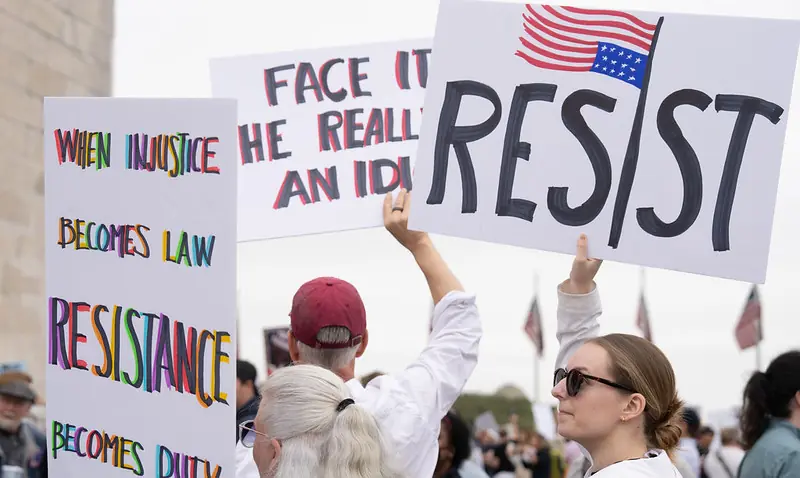In April 2025, the U.S. House of Representatives passed H.R. 22—the Safeguard American Voter Eligibility (SAVE) Act. Introduced as part of a broader push by Republican lawmakers to impose stricter voting regulations ahead of the 2026 midterms, the bill was framed as a tool to safeguard electoral integrity.
It mandates that anyone registering to vote in federal elections must provide documentary proof of U.S. citizenship—a significant departure from current federal standards, which typically rely on sworn attestations. While its stated goal is to prevent noncitizen voting, a practice already rare and illegal, critics argue that the legislation’s practical effect would be to disenfranchise millions of eligible voters by imposing administrative hurdles.
The SAVE Act’s Documentation Requirements
According to the bill text, the SAVE Act would prohibit states from registering individuals to vote in federal elections unless they submit valid documentary proof of citizenship, such as a passport, birth certificate, or naturalization record. It would also prohibit mail and online registration—methods used widely by voters in all 50 states—centralizing voter access through in-person verification.

This shift constitutes a federal override of current systems in which voters affirm their citizenship under penalty of perjury. The legislation lists only a limited set of documents as acceptable proof, many of which are difficult to obtain or update, particularly for voters in low-income or rural areas. It mirrors a law previously implemented in Kansas that was ultimately struck down after disenfranchising over 30,000 eligible voters.
Barriers to Participation for Lawful Voters
Legal experts and civil rights groups warn the bill would have far-reaching effects on lawful voters. For example, 69 million American women and 4 million men have birth certificates that no longer reflect their legal names due to marriage or gender transition. Without supplementary legal documents, these voters could be blocked from registering.
Naturalized citizens, voters of color, Native Americans, rural populations, and first-time voters are also likely to be affected. Many lack the required documentation or face logistical and financial obstacles to obtaining it. Case studies from the Institute for Responsive Government estimate that 7% of Texans and 10% of Georgians would have difficulty proving their citizenship despite being eligible to vote.
Voter Roll Audits and Legal Threats to Officials
The SAVE Act also imposes administrative and legal burdens on election officials. It requires states to audit existing voter rolls using state and federal databases, which are often incomplete or inaccurate. These audits may result in the removal of lawful voters flagged incorrectly as noncitizens.
Read More
Additionally, the bill empowers private citizens to sue election officials who are perceived to be noncompliant—raising concerns about politically motivated harassment. Penalties include civil liability and criminal prosecution, which may lead officials to act overly cautiously and obstruct legitimate registration efforts.
The removal of mail and online registration would also dismantle third-party voter registration drives, which have historically expanded access among younger voters and communities of color.
Addressing a Problem That Doesn’t Exist
There is no evidence of widespread noncitizen voting. Legal studies and electoral audits confirm that such cases are rare and usually accidental. The Migration Policy Institute echoes this conclusion, noting that unauthorized immigrants, green-card holders, and temporary visa holders are not voting in significant numbers.
Despite this, the SAVE Act introduces high barriers that may exclude lawful voters while addressing an almost nonexistent problem. This approach exemplifies a broader pattern in electoral politics: using the rhetoric of fraud prevention to justify restrictive voting measures. As the ACLU warns, this is less about protecting elections and more about reshaping the electorate by exclusion.
Redefining the Right to Vote in the U.S.
Although the SAVE Act passed the House of Representatives in April 2025, it has not yet been adopted. In the Senate, where a 60-vote threshold is needed to overcome the filibuster, its prospects remain uncertain.
In parallel, a recent executive order issued by former President Donald Trump seeks to impose similar citizenship verification requirements, but it is already facing legal challenges from civil rights organizations. Whether through legislation or executive action, the push to restructure voter eligibility continues to reshape the U.S. electoral landscape.
Though unlikely to pass the Senate due to the filibuster, the SAVE Act sets a critical precedent. It reframes voting as a conditional right—contingent on access to documentation—rather than a democratic entitlement.
If enacted, it would redefine who can participate in elections, not by overt prohibition, but through administrative exclusion. In doing so, the bill shifts the balance of democratic power—not by fraud, but by design.
This debate raises urgent questions about who gets to participate in American democracy—and on what terms. That conversation is far from over.


